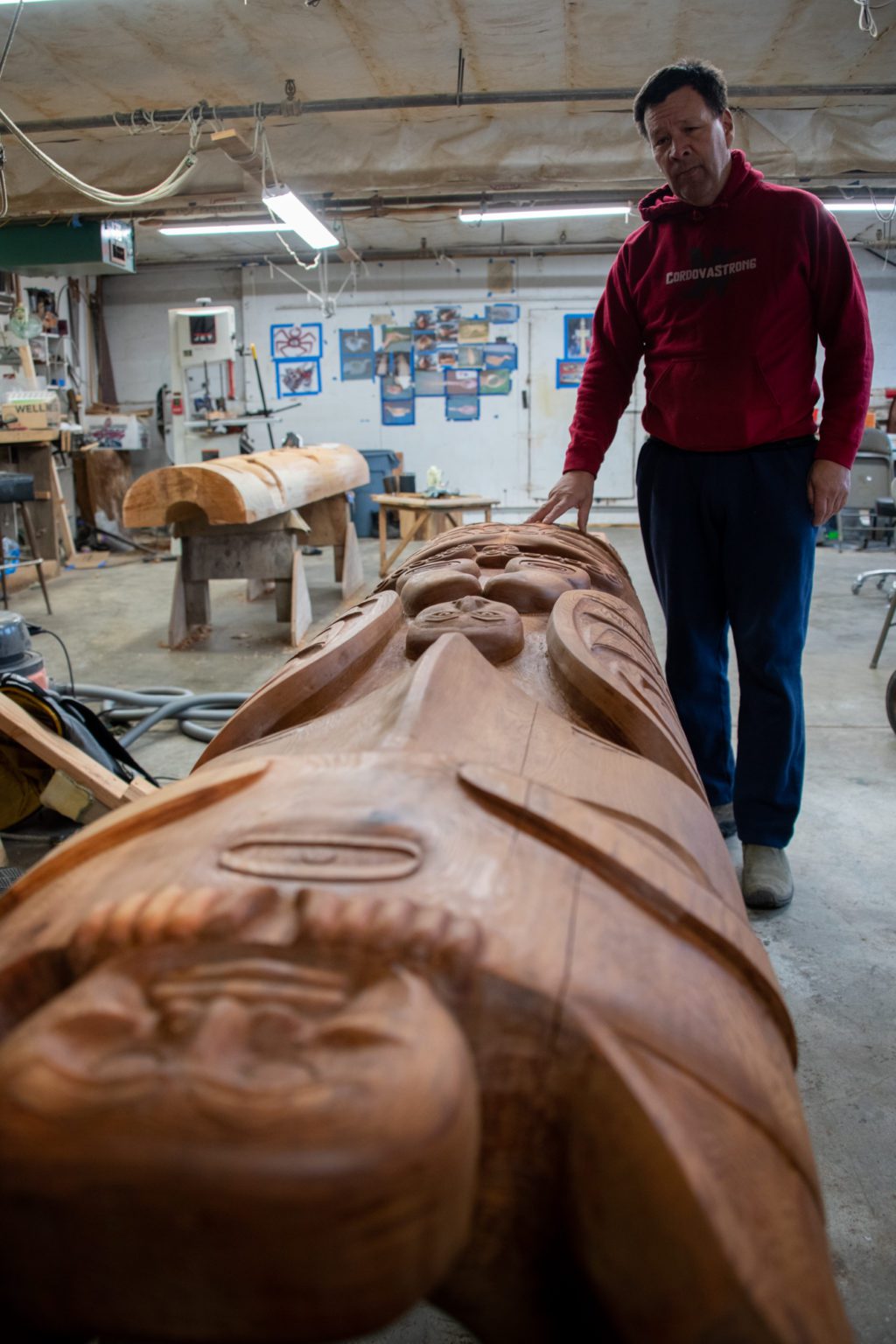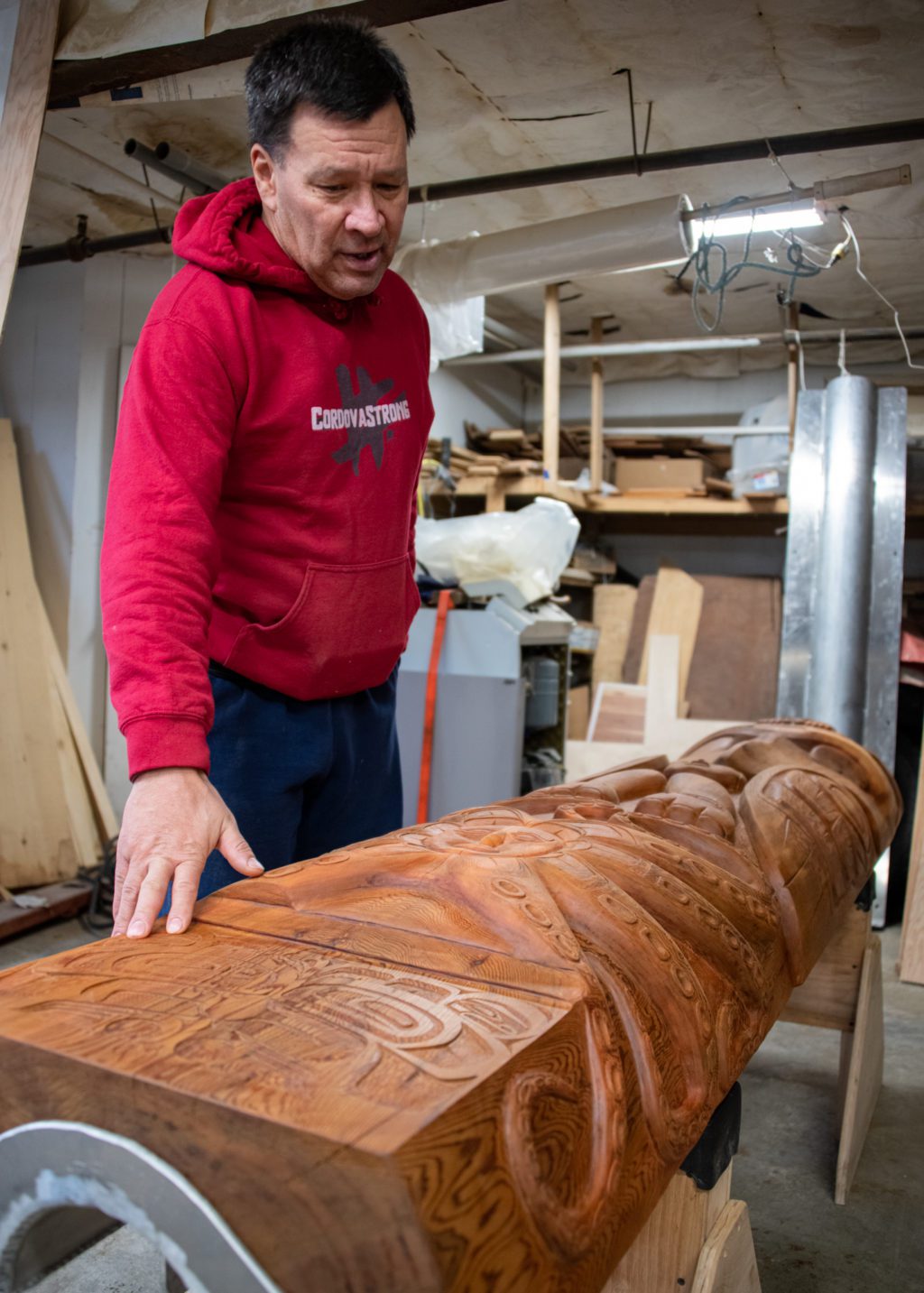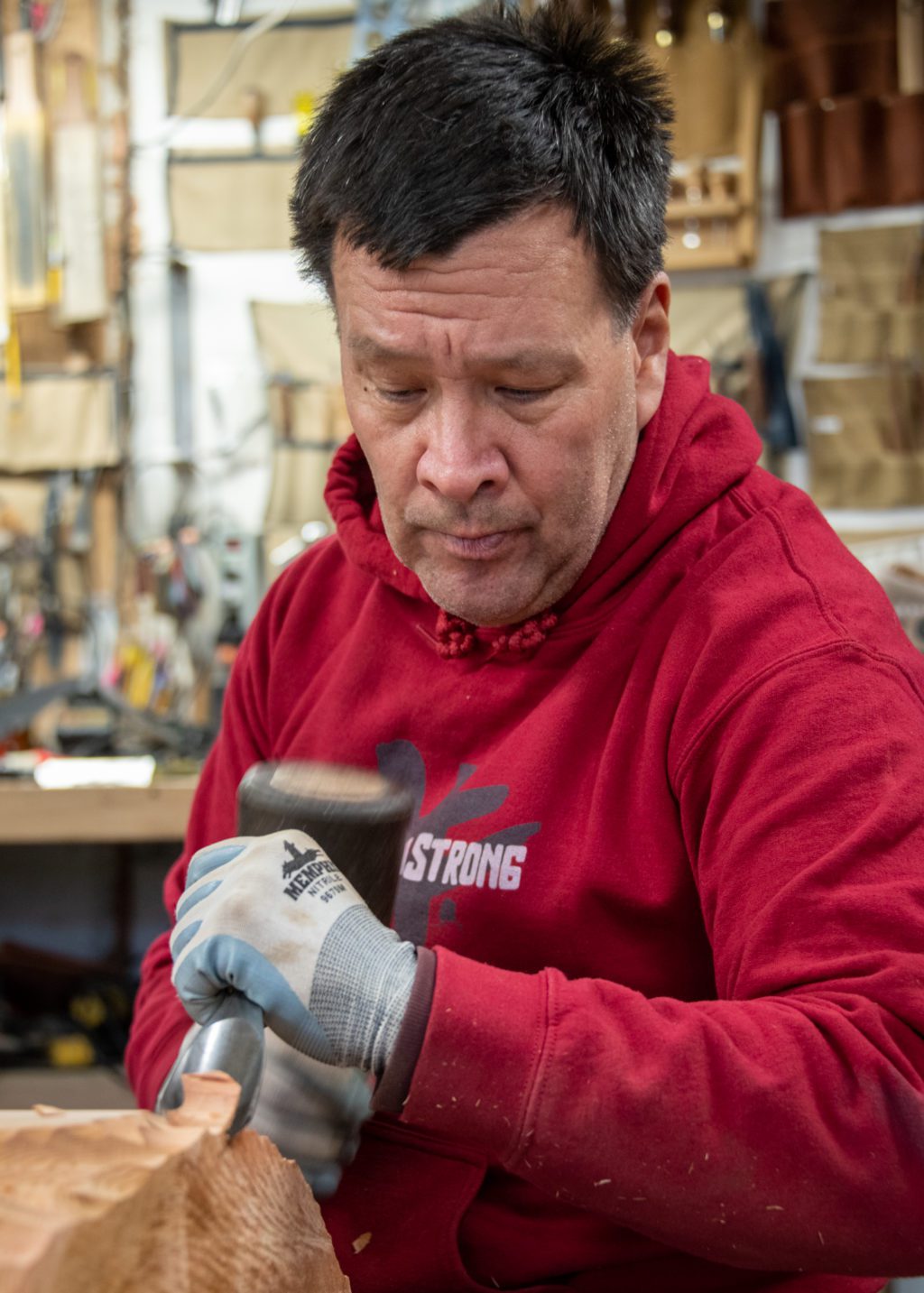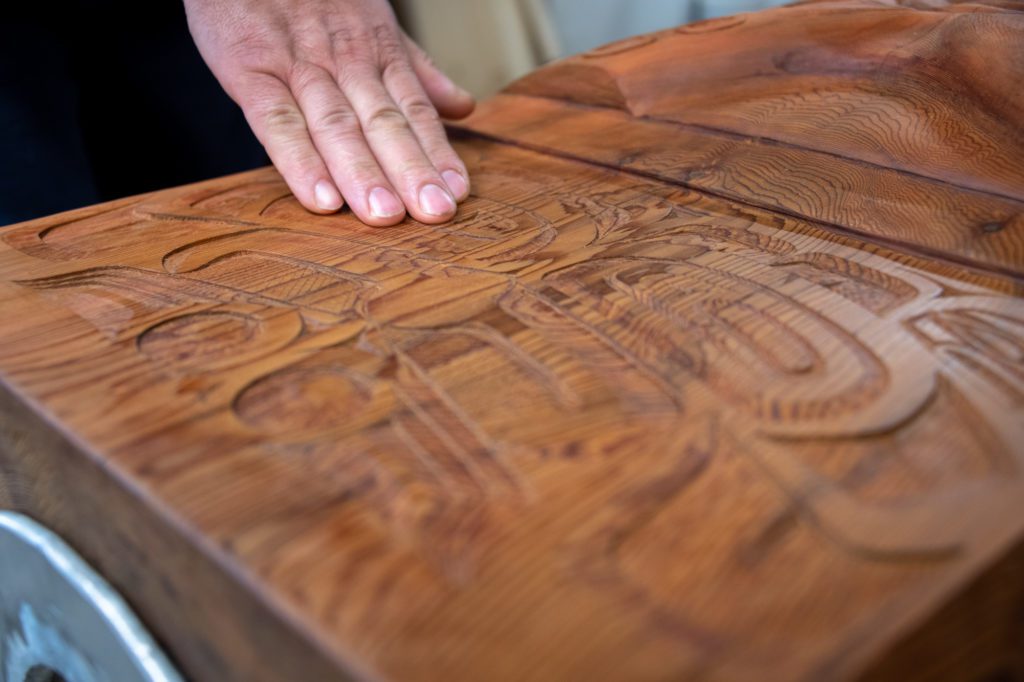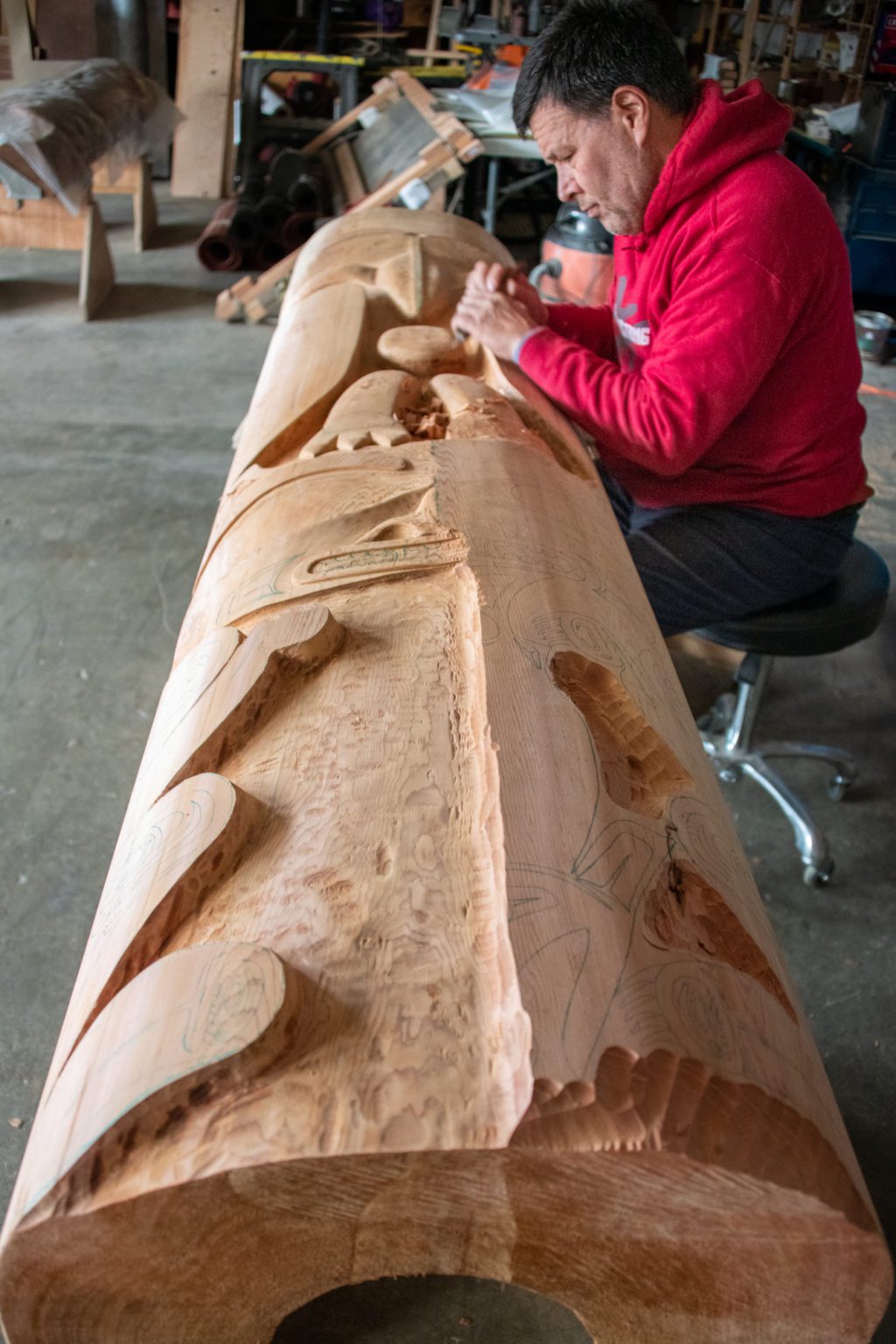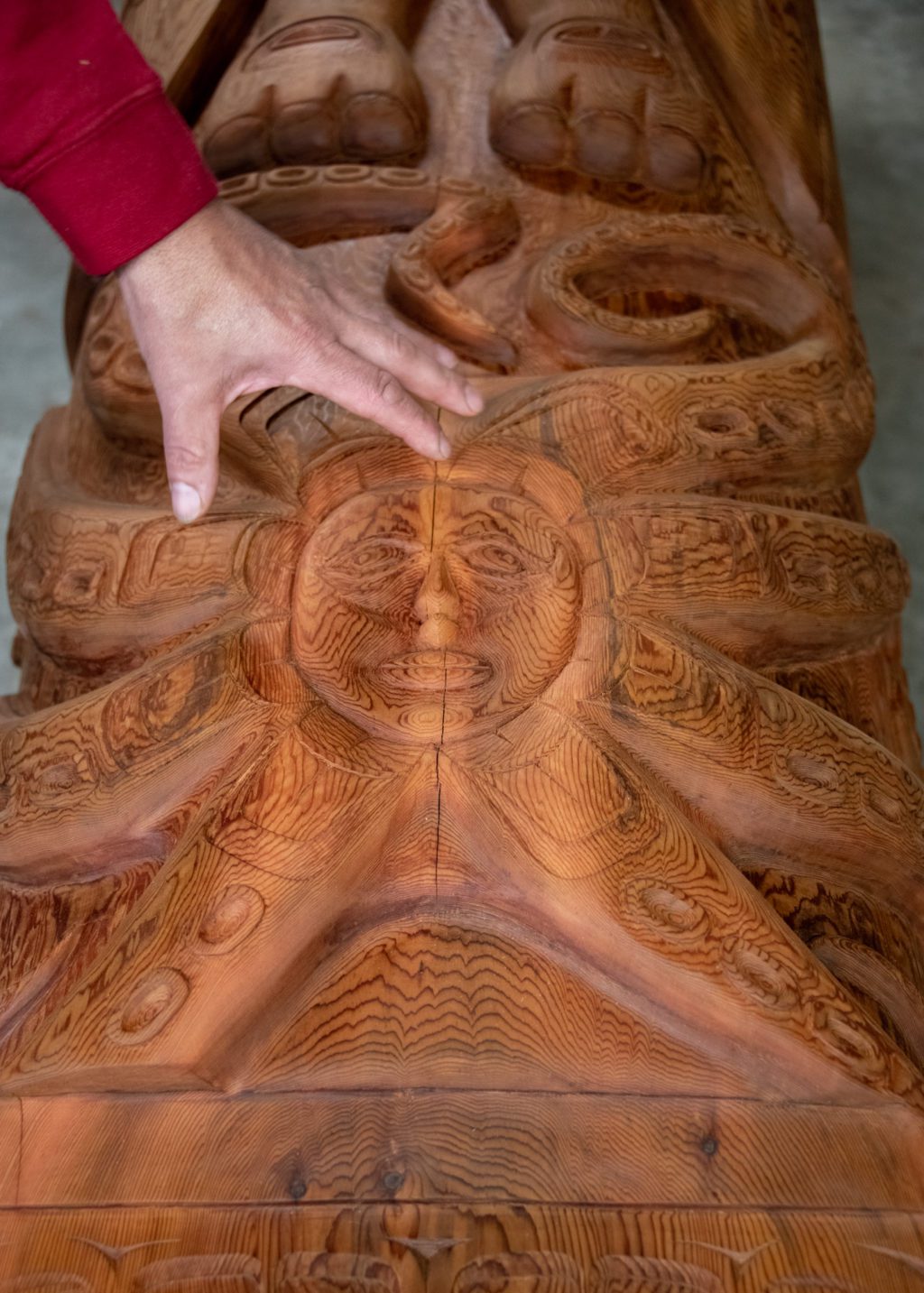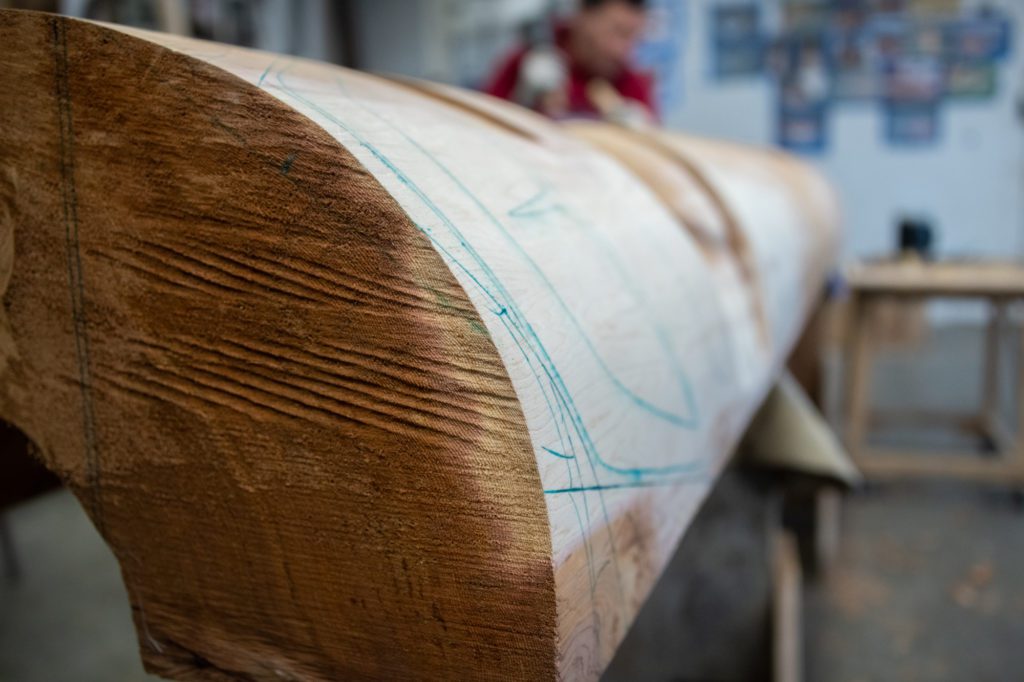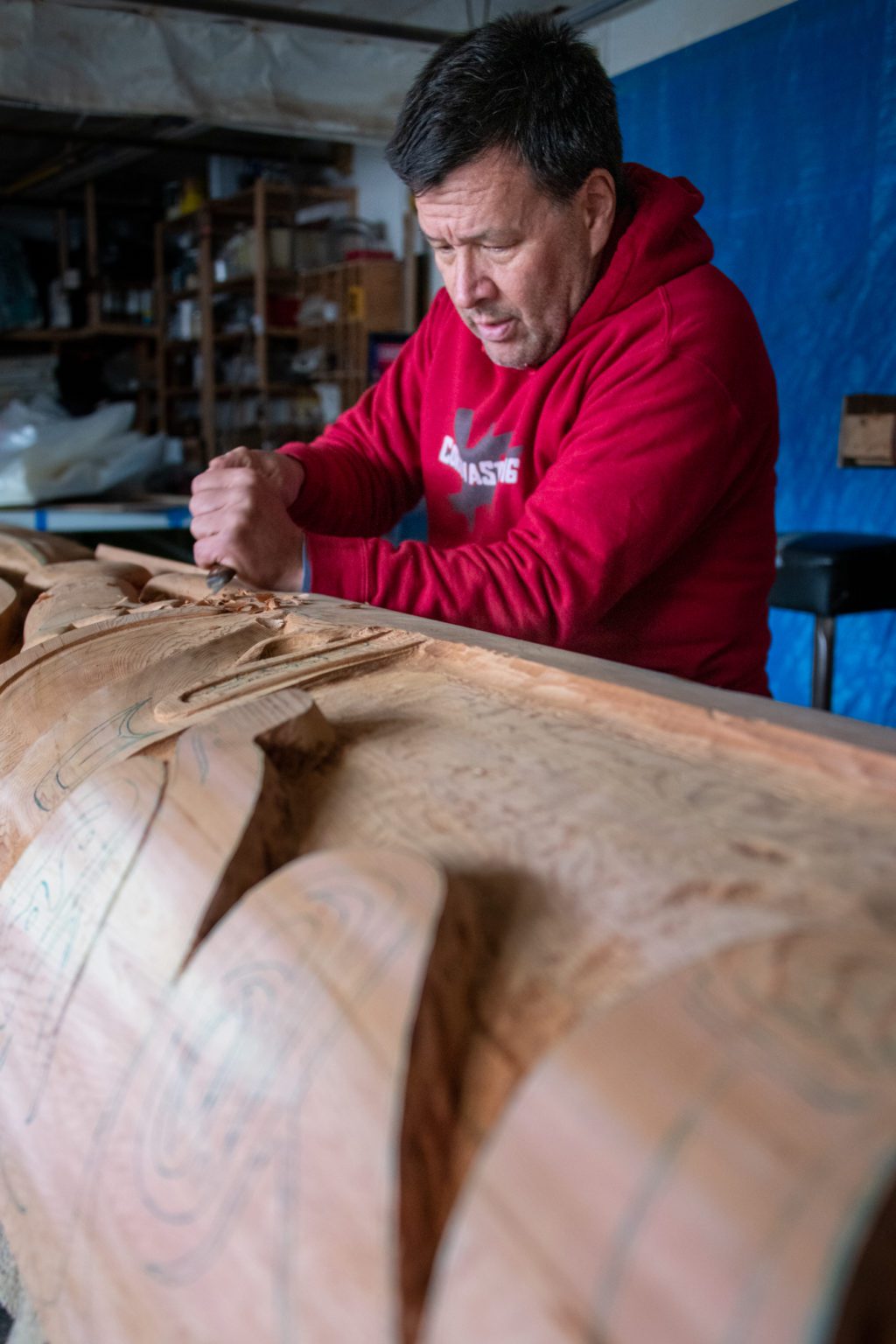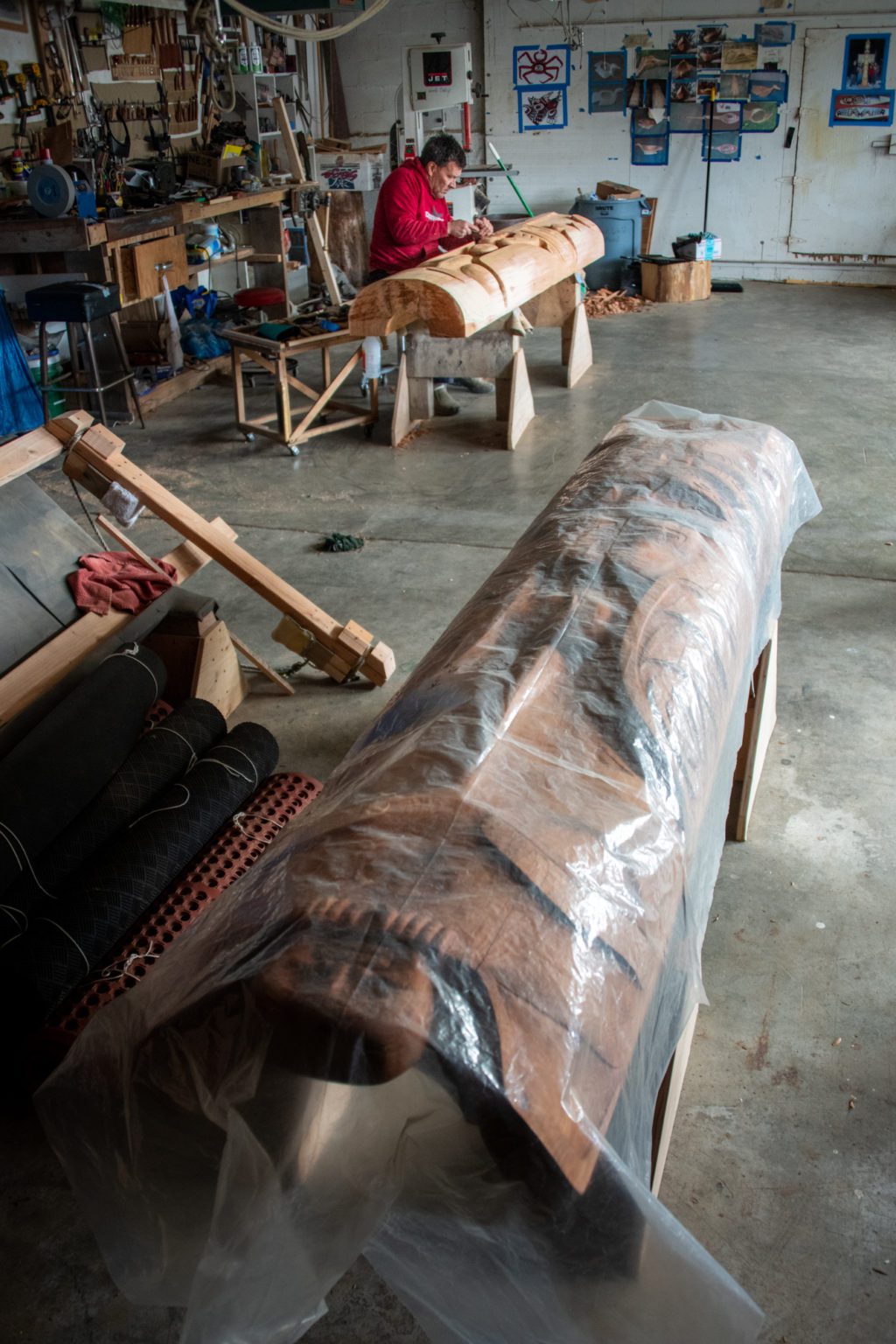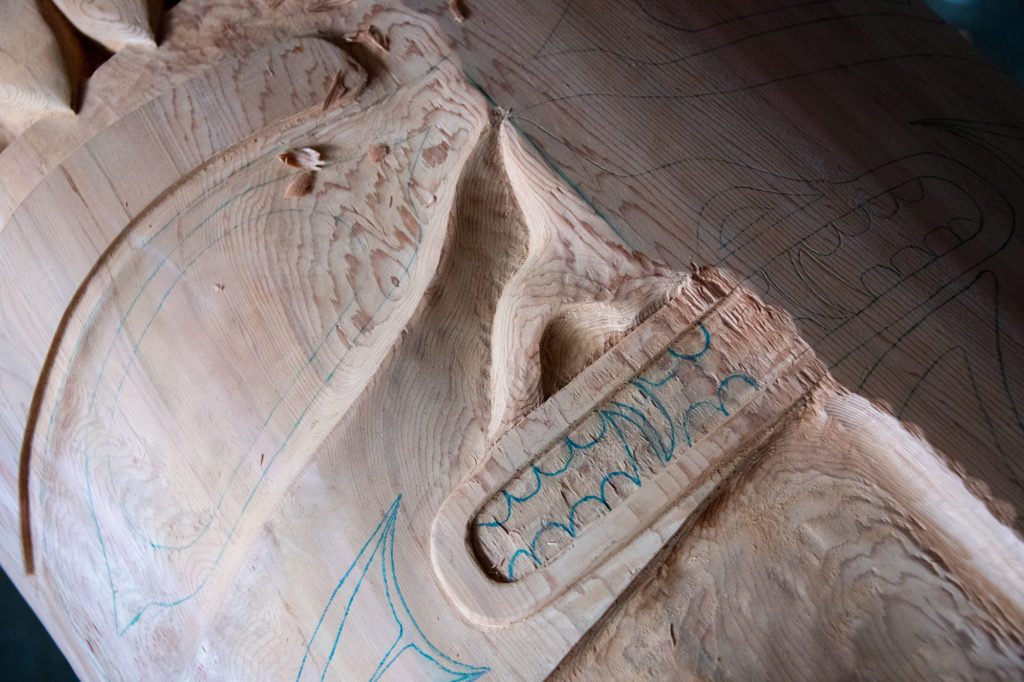A pair of totems carved from a roughly 850-year-old red spruce tree will keep watch over the entrance to Prince William Sound Science Center’s new campus. Mike Webber began on the totems in December, often working for 12 or more hours per day in the Cordova workshop where he carved his first totem over 20 years ago.
Webber has previously carved five totems, including one owned by the Native Village of Eyak and two replicas of historical totems on display at Wells Fargo’s First Street venue. Working on commission means Webber has been able to keep little of his own artwork, and he said he was pleased that his newest totems would stay in Cordova.
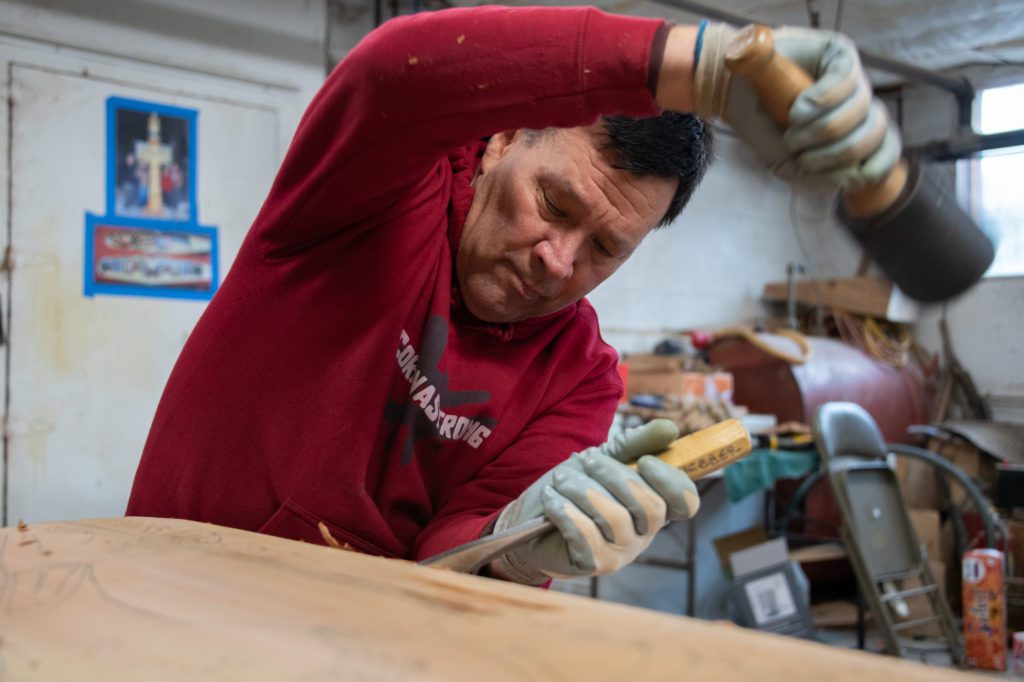
The new totems are carved in the style of house posts, traditionally placed at the entrance of longhouses used by Alaska Native leaders. As the iconography on a house post conveys the identity and background of the people inhabiting a longhouse, these totems will communicate something about the work done by PWSSC at their new facility, Webber said.
Webber has already finished work on the first totem, which was funded by the Eyak Corporation. Standing 8 feet 2 inches tall, the totem’s carved designs include a raven and an octopus, symbolizing knowledge and intelligence, respectively. The totem is crowned with a watchman, who keeps a lookout for danger, and an “Eyak eye,” symbolizing the Eyak people.
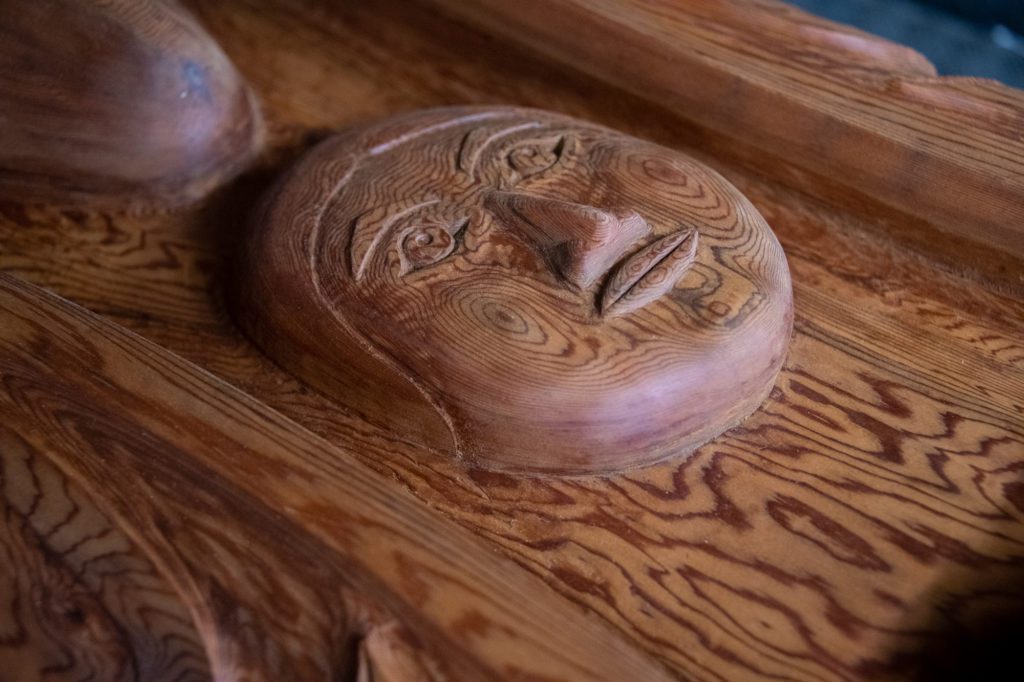
The second totem, funded by the Chugach Corporation, remains a work in progress, and Webber hopes to have it finished by April 15. Using a Tlingit artist style similar to that of the first totem, it will include a bear grasping a humpback salmon—a symbol for Webber’s family group, which includes around 300 other people in Cordova. Tuesday, Webber said he’d already made three attempts at carving the bear’s mouth, but had not yet managed to get its fanged grin just right.
“I’m wasting so much time on those lips!” Webber laughed. “You always get stuck somewhere, so this is where I’m stuck.”
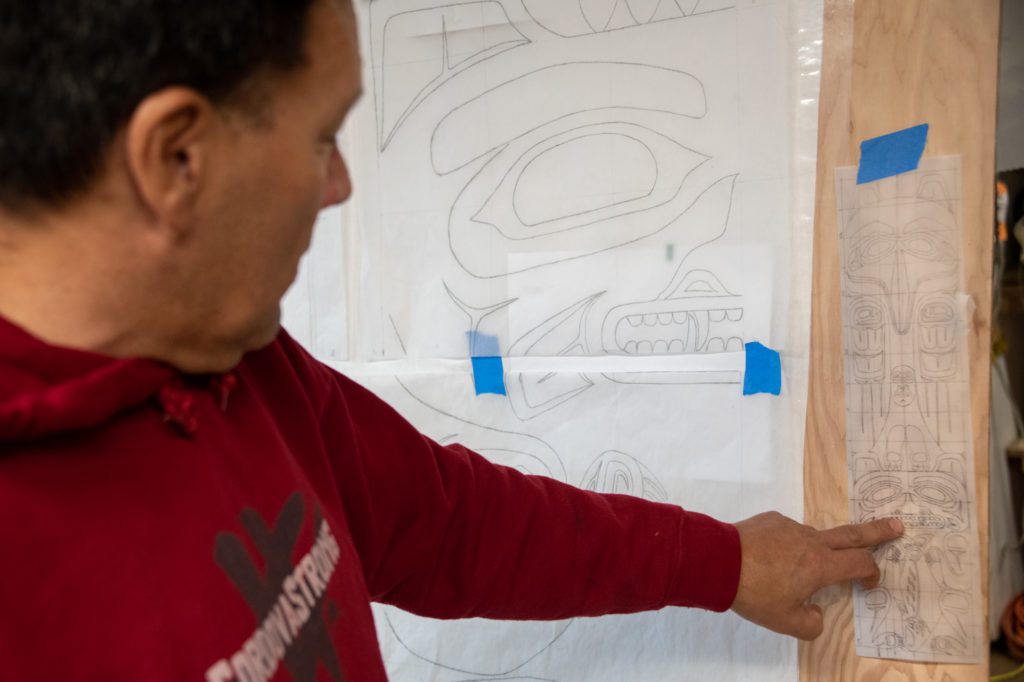
While the first totem symbolizes creation and intelligence, the second will symbolize strength and sustainability, Webber said. Both totems will be weatherproofed but left unpainted, and will be installed at the PWSSC facility using low-profile metal brackets in a surrounding featuring rough-hewn wood.
Before starting work on the tree — which Webber has dubbed the “grandmother tree” for its longevity — Webber said a blessing thanking the tree for its sacrifice and calling on the spirits of his ancestors for guidance.
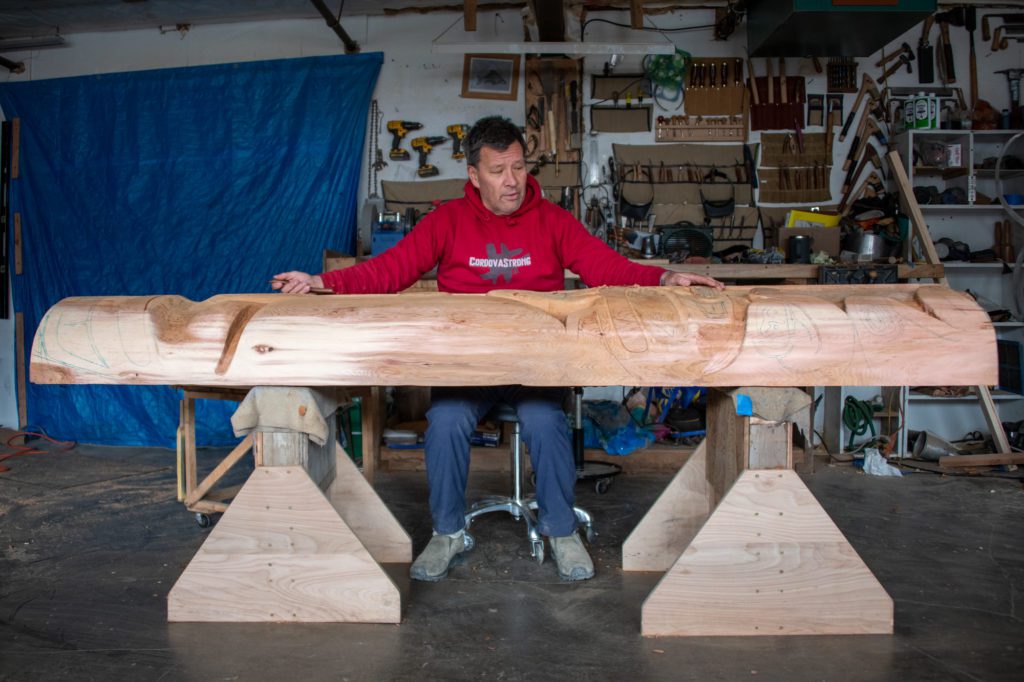
“It’s been around a long time and it’s seen a lot of changes in the world — it’s a great tree to honor this type of art, in my mind,” Webber said. “It’s bittersweet starting a totem because… it felt like I connected with some ancestors while I was doing it – it was exciting to have that sensation.”
